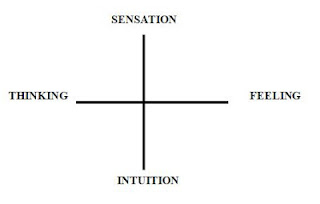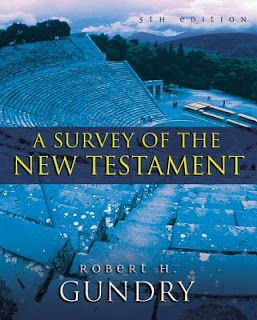AUTHOR: Paul Louis Metzger
PUBLISHER: Nashville, TN: Thomas-Nelson, 2012, (352 pages).
This book is a bold attempt to reach out to both Christians and non-Christians in the area of mission, evangelism, understanding, through an unconventional way of doing apologetics. While many evangelicals treat "apologetics" as meaning the way to defend the truths of Christ, making special care not to make it seem like Christians are apologizing for their faith, Metzger chooses to begin with an apology. Recognizing that the essence of "Connecting" with people is through relationships and understanding, Metzger adopts what he calls a "Relational-Incarnational Approach" that seeks to cultivate dialogue through a dual bridge building. Rather than crude dehumanizing statements and caricatures of non-believers, Metzger chooses not to begin with the religious mask but the human person. He uses the powerful examples of two persons, one a young upstart evangelical scholar, and another in Francis Schaeffer. The former won the arguments but lost the heart of the opponents. Schaeffer however won both the minds and the hearts of his opponents. The difference is connecting truth and love and communicating them together to opponents. This is exactly what Metzger tries to do in this book.
First things first, Metzger offers to wipe the slate clean by acknowledging that Christians themselves are not perfect in the first place. He begins with a humble apology for seeing non-Christians as less than humans. He apologizes for the way evangelicals have hurt and misunderstood the points of views of dissenting viewpoints. He asserts that the reason why forgiveness is sought is because of Christians' tendency to reduce God's truth into a series of propositions that have not made significant headway in reaching out to others. Apologies also apply for Christians trying to sell "Christian products" rather than sharing Christ. He takes time to point out that we ought not become stumbling blocks, for there is only one true stumbling block, the Cross of Christ. He speaks out against the three impediments within Christian circles, like narcissism, nihilism, and nicheness of communities that have prevented Christians from presenting the true stumbling block in Christ. Until Christians repent from their wrong deeds, and admit their imperfections humbly and objectively, it is difficult to begin any meaningful conversations. In fact, it is "fear, pride, and arrogance" that are stumbling our Christian witness.
Part Two of the book engages in detail eight different types of religions and spiritualities. Metzger puts together his experience and knowledge of Judaism, Islam, Hinduism, Buddhism, Unitarianism, Mormonism, Nietzschean Atheism, and Neo-Paganism through personal friends and contacts. He devotes a chapter to each of these religions, using a three-part framework. Firstly, he makes an apology for past mistakes against them. Secondly, he expresses as clear as possible his understanding of what each religion supposedly stands for. This enables a fair and objective understanding of their beliefs. Finally, he brings out the Christian's understanding of the gospel, and how the gospel differs from the religions.
Part Three touches on five hot topics affecting modern culture, namely the consumeristic culture, the hell-less beliefs, creation vs evolution, homosexuality-marriage-hospitality, and fascism even in Christian circles.
Part Four provides a platform for a response from the religions Metzger has described. This is where his friends provides counter arguments to Metzger's first attempt to connect. All eight religions talked about responded to Metzger. Dr Adam Gregerman graciously responded to Metzger on the Jewish question. Richard Reno speaks on behalf of the Islam, and is open for greater dialogue. Prema Raghunath writes a short response for Hinduism. Kyogen Carlson shares from a Buddhist perspective. Marilyn Sewell offers a Unitarian perspective. Robert Millet speaks in response to Metzger's article on Mormonism. Thomas W Clark and Austin Dacey gives their take on Metzger's chapter on Nietzschean Atheism, and Gus diZerega offers a response for "Avatar."
Finally, Metsger ends with a brief apology for prayer in which one lets God link the head and the heart, trusting the Holy Spirit to make whatever connections necessary to preach Christ.
My Thoughts
This book is a unique way to do apologetics. It is very sensitively written out, and is a bold attempt to speak the truth in love to both Christians and especially non-believers coming from the various faith traditions. I like the way Metzger painstakingly tries to represent as accurately as possible his understanding of religions, neo-paganism, and the cultural religions of this age. The book is very informative, filled with descriptions of personal encounters with real practitioners. One may wonder about why Metzger has chosen only eight out of so many different religions. I suspect that the purpose is to demonstrate the application of Metzger's "Relational-Incarnational Approach" in apologetics.
Metzger is spot on in saying that Christians need to learn to apologize for past mistakes and any present arrogance. Not only will that help give Christians a clean slate to begin with, that will earn the respect of non-believers. By giving others a chance to explain their points of view,. the Christian will be better able to practice humility that is open to people, without having to concede any doctrinal truths. I look at the way Metzger's friends have responded. Interestingly, the tone of their responses mimics the tone of Metzger's writings. In other words, when one is kind, it is reciprocated in kind. That is perhaps one of the strongest part of the book. The other part is this. If there ever is a stumbling block, let it not be because of the Christians' arrogance, pride, or rudeness. Let it also not be because of the Christians' lack of sensitivity to non-believers in a pluralistic society. Instead, present the cross of Christ. All the Christian need to do is to explain clearly as possible the gospel, and eventually lead people to meet Christ for who Christ is. No gimmicks. No special effects. Just the plain and simple cross of Christ.
If you are looking to do apologetics that enables one to speak the truth in love, this is the book to use. Calm, collected, and comprehensive, make sure we begin with an apology. After all, we are all sinners, saved by grace. So live as a forgiven person, constantly seeking forgiveness.
Rating: 5 stars of 5.
conrade
This book is provided to me free by Thomas-Nelson and NetGalley without any obligation for a positive review. All opinions offered above are mine unless otherwise stated or implied.















